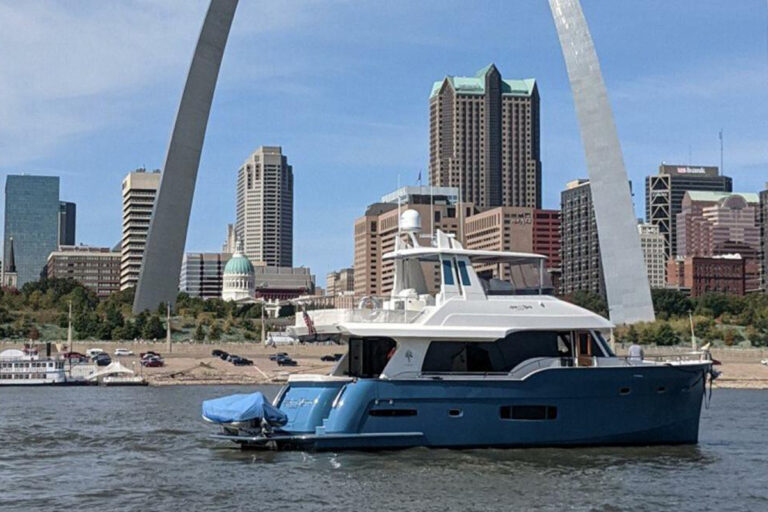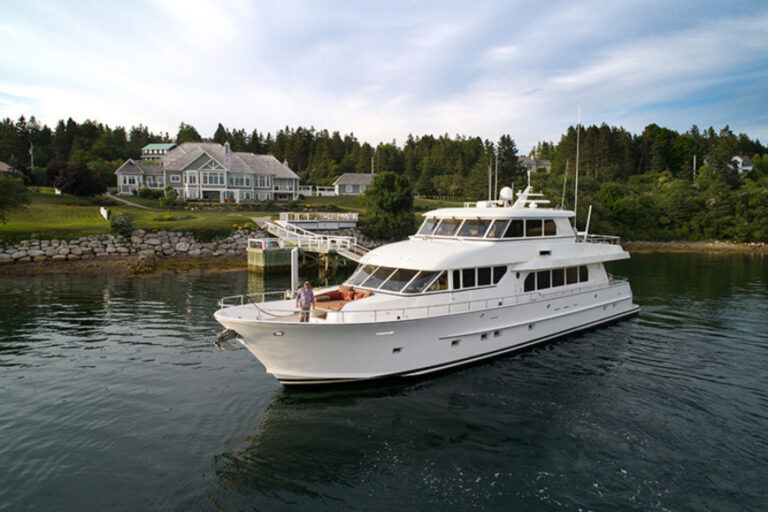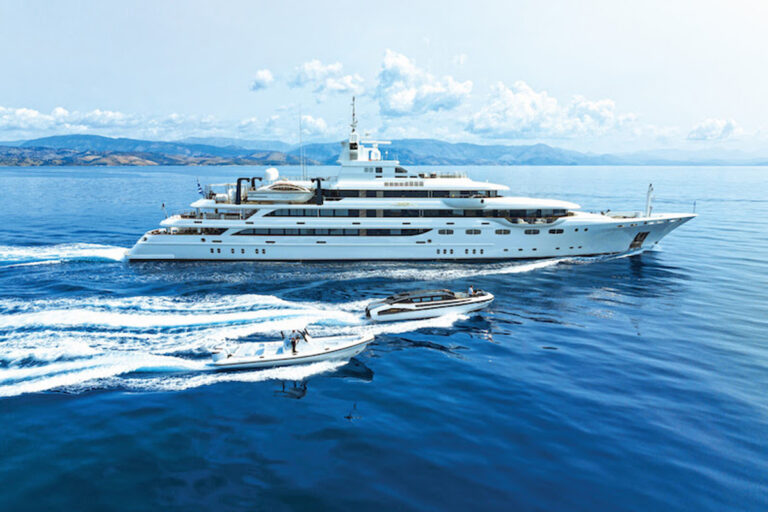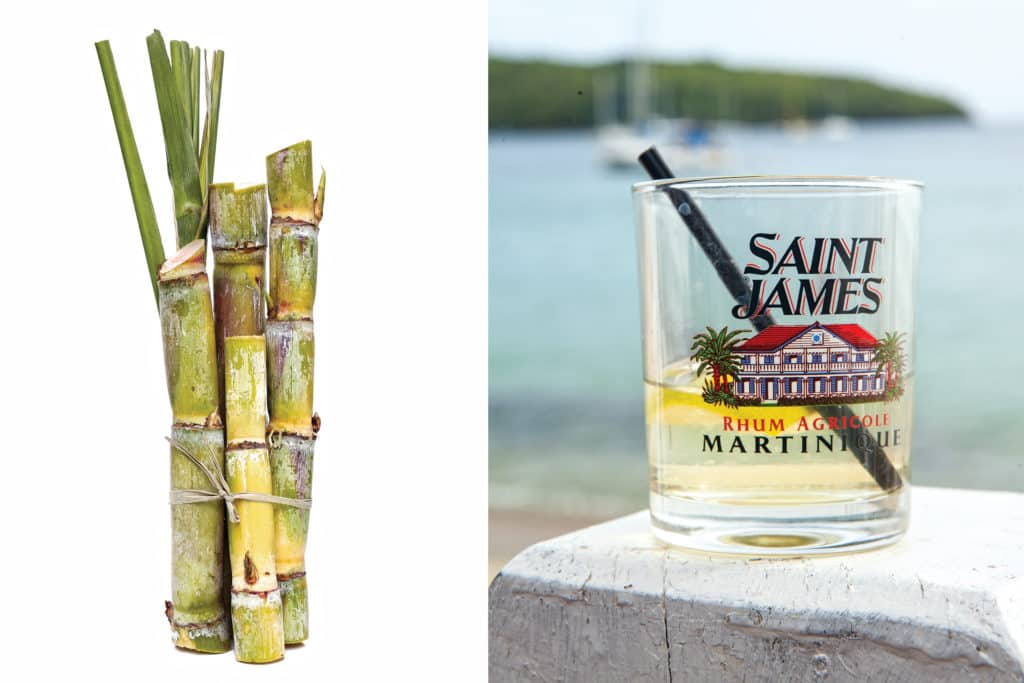
“The best rum in the world comes from Martinique,” Laurent Assier de Pompignan insists. The silver-haired connoisseur is Martinique’s largest importer of fine wines, Champagnes and spirits, and he assures me there’s no need to take his word for it. The rhumeries, as distilleries are called on this French Caribbean island, welcome visiting yachtsmen and invite, no, expect us to taste what comes out of their stills and barrels. As Assier de Pompignan puts it: “The rum made here is the best because it’s rhum agricole — agricultural rum — made straight from sugar-cane juice, not molasses. You’ll see.”
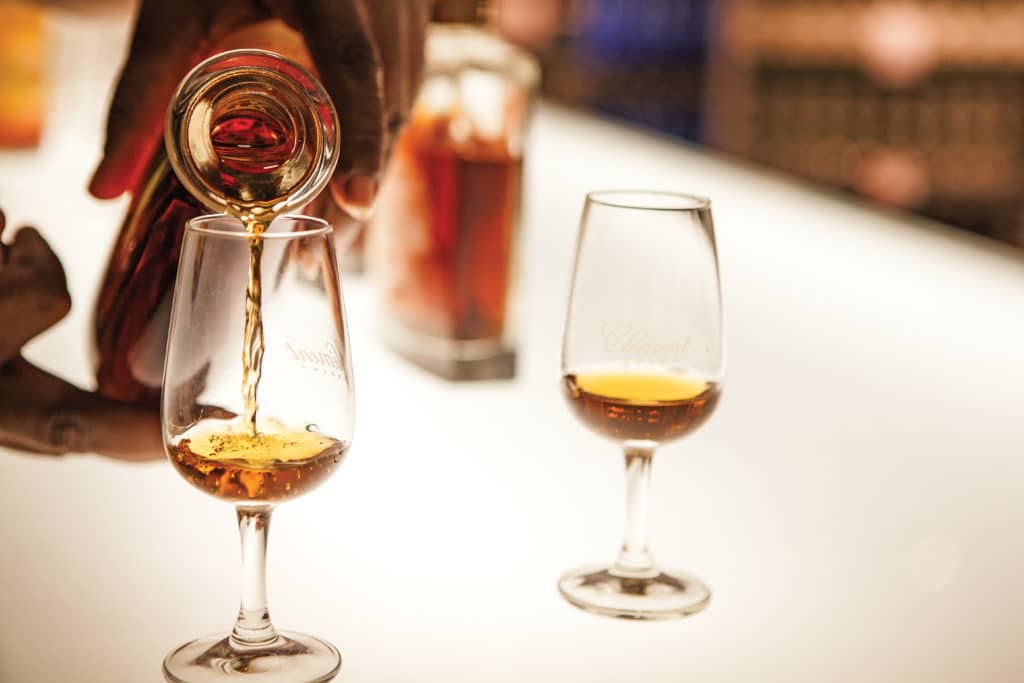
We’d already noted the main ingredient as we cruised along the island’s leeward coast a few days earlier, when I’d seen vast fields of ripe green cane rippling in the soft trade winds. Now, anchored in the well-protected harbor at Le Marin, which has a 750-berth marina, we were free to hit the Route des Rhums. Our first stop was the tourism office in the marina complex for a map marked with the island’s dozen-plus distilleries — marketed as more than on any other Caribbean island.
We start small with Habitation La Favorite, responsible for just 5 percent of the 3.2 million gallons of rum produced annually on Martinique. “We’re heading the right way,” my husband, Steve, says confidently as we wind along a secondary road northeast of the capital, Fort-de-France. Conveniently, we managed to arrive in Martinique smack in the middle of the harvest season, which is February through June, so we’ll get to see the distilleries in full action.
Entering La Favorite’s venerable brick building is like taking a trip in Peabody’s WABAC machine. This distillery started making rum in 1842, and not much appears to have changed. The equipment that crushes the sugar-cane stalks to release their juice is powered by a 19th-century steam engine with belching pistons and giant cogwheels — one is at least 10 feet in diameter — that turn slowly through a vat of black oil. The air is sweet and sticky with cane fibers, and hot as hell: Roaring furnaces burn the crushed stalks, called bagasse, to produce steam to power the engine. A worker stoking the boilers opens the ancient door of one furnace, sending out a conflagration of sparks, so we can see the flames and feel the full intensity of the heat. This is not your usual tourist experience.
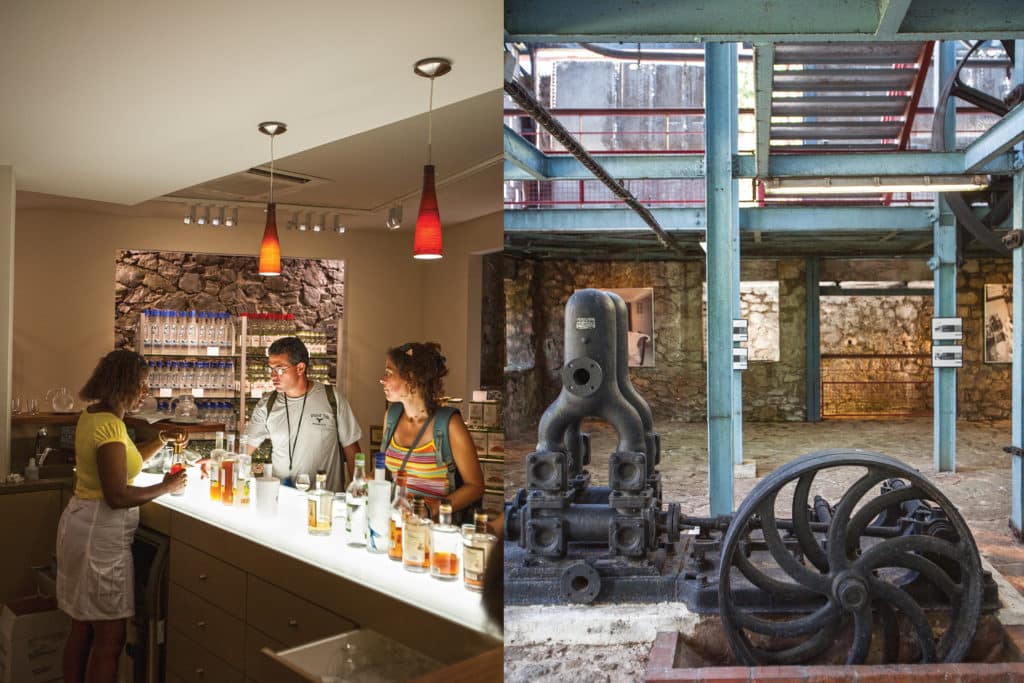
In fact, there is no formal tour here, but there aren’t any “keep out” signs either. We’re welcome to wander where we want. Workers, pleased by our interest, gesture here and there to show us what they’re doing. One worker motions for us to climb a ladder to a catwalk so that we can stick a finger in a huge tank towering about 15 feet above the floor. In this tank is fermenting cane juice, aka rhum agricole in its earliest stage. The distiller himself then waves us over to the sight glass where he’s monitoring alcohol content, so we can taste rum straight out of the copper distillation column.
Whoa. Before it has rested for a few months and has been cut with spring water to bottling strength (50 to 55 percent alcohol, or 100 to 110 proof), this is one breathtaking spirit. The aged rums we’re invited to sip in the impromptu tasting area are another drink entirely. Steve tries one that was put into oak barrels the year he was born, and he pronounces it better than the finest Cognac. A worker leads us into La Favorite’s aging warehouse, where we see barrels of rum stacked 30 feet high. As the rum ages, some of it evaporates — “the angels’ share,” it’s called — intensifying the flavor and aroma of the remaining rum. The smell alone is intoxicating.
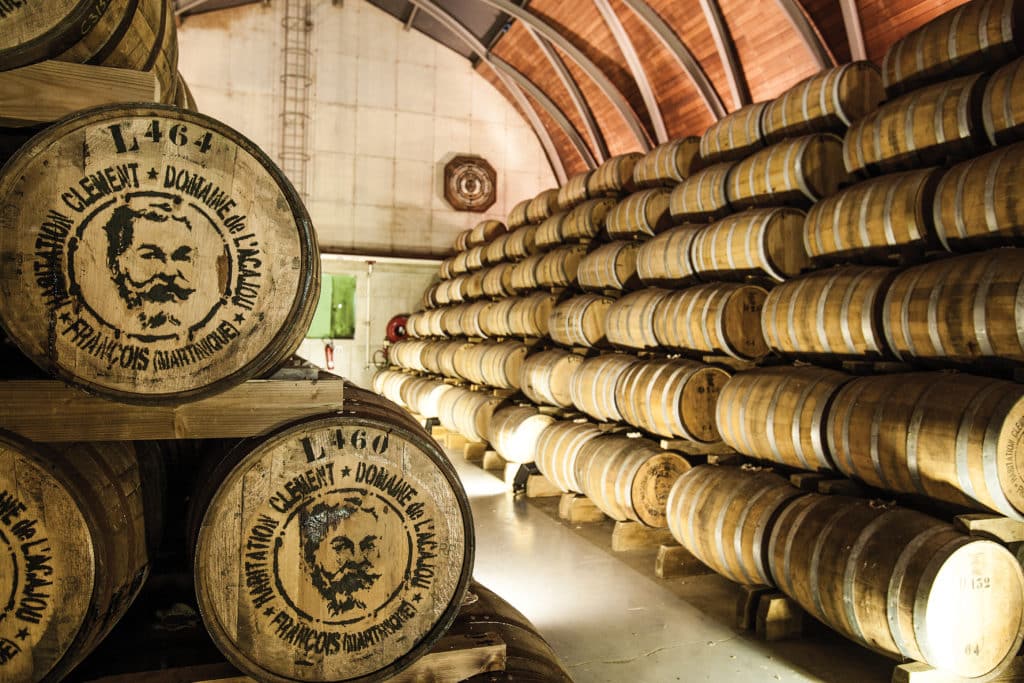
Next, A Tasting of Whites
Assier de Pompignan told us that when it comes to white rum, which is rum not aged in barrels, many Martiniquans regard the ones produced by La Distillerie Neisson as the island’s best. This seems a fine reason to designate it our next stop. This distillery is a relative child, in operation a mere 85 years. Instead of the roaring furnaces and Dickensian engines of La Favorite, Neisson is like a plus-size Erector Set come to life: pristine, polished models in gleaming copper and brass, with richly painted iron and steel. It’s the kind of machinery that gets Steve drooling. We’re more at the edge of the action until we step into the building that houses the shop and tasting bar. It’s almost noon, and the tiny bar is bustling — not with other visitors, but with the distillery’s own workers. They’ve come for a pre-lunch drink.
“You gotta love the job perks here,” Steve says as they offer to mix us what they’re mixing for themselves: a Ti’ Punch, Creole for “little punch.” That name describes the size of the drink, not its wallop. “It’s the best way to taste rhum agricole,” the guy behind the bar says. He means the unaged type; Martiniquans wouldn’t dream of sullying aged rum with any mixer. He pours a bit of pure cane syrup into short, squat glasses bearing the Neisson logo of a sailing ship. Next comes a squeeze of fresh lime, a generous pour of rum and a weird, five-spoked twig. He puts the spoked end into the glass, rolling the upper end between his palms to blend the drink. A lélé, he calls the twig, from a local tree called the bois lélé, or “swizzle-stick tree.”
With toasts of salut and santé, we drink. The lime and cane syrup cushion the kick, making it easy to understand why rum made straight from cane juice is called rhum agricole. I can smell and taste the fresh, grassy, agricultural notes. Equally easy to understand is why Assier de Pompignan and his fellow Martiniquans disparagingly call rum made from molasses rhum industriel, or “industrial rum.” It simply doesn’t taste the same, and they wouldn’t dream of drinking it. Traditionally, people mix Ti’ Punch to suit their own tastes — a hint less lime, a drop more cane syrup, maybe cane sugar instead. As the islanders say: Chacun prépare sa propre mort. “Everyone prepares his own death.”
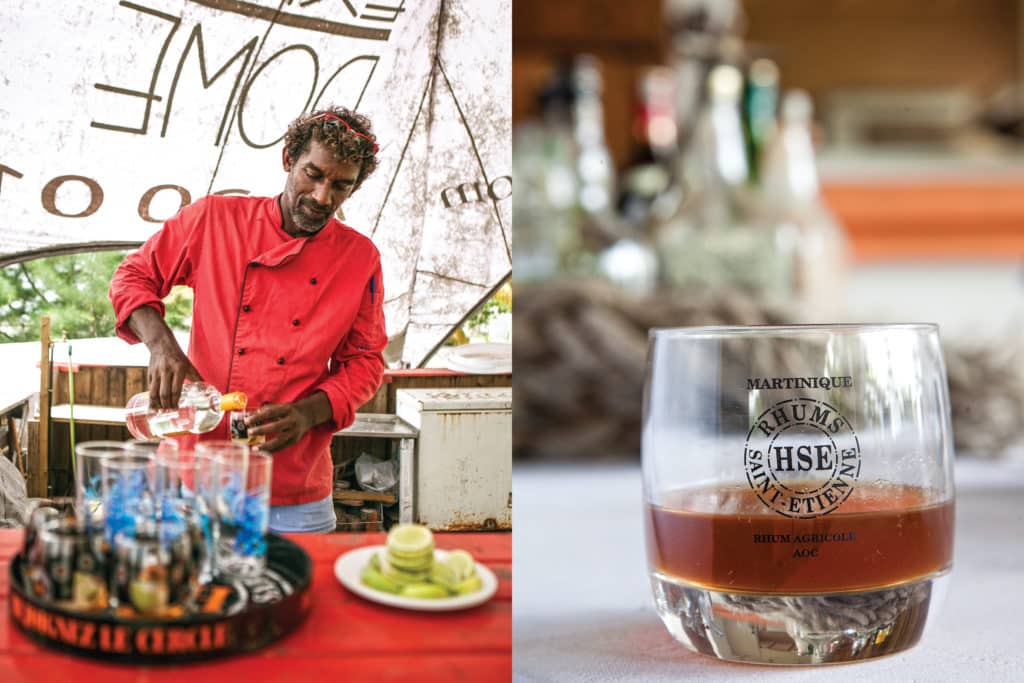
Hints of Spanish Sherry
Wisely, we had a car scheduled for a second day; the Route des Rhums deserves at least that much time. Martinique is a big island, more than 425 square miles, with distilleries scattered from its northern tip (Rhum J.M, in Macouba) to its southwest (Trois Rivières, the closest to the harbor at Le Marin). From taste to tour, each offers a different experience.
At Habitation Clément, we stroll through lush, tropical gardens before moving indoors to the stylish — and overpacked with visitors — tasting room. This isn’t the place to see rum made from scratch. The sprawling estate is just for aging: 396,000 gallons mellow on the premises in oak barrels, with the actual distilling done elsewhere, behind closed doors. Farther north on the Atlantic coast, the touristy experience at Saint James also attracts crowds. The train ride through cane and banana fields doesn’t do much for us (though the 10-and-under crowd on board seems to be having a good time), but the fab vintage rum ads and old labels in Saint James’ Musée du Rhum are a hoot. The shrub — rum infused with orange and spices — at the tasting bar makes for a sweet finish.
We prefer the low-key intimacy, and the rums, of our last stop: off-the-beaten-path Habitation Saint-Etienne. That is, when we eventually find it. The roads get narrower and the map more confusing as we wind toward Gros Morne in the island’s mountainous interior. Saint-Etienne’s cool, elegant riverside estate is used for aging, blending and bottling.
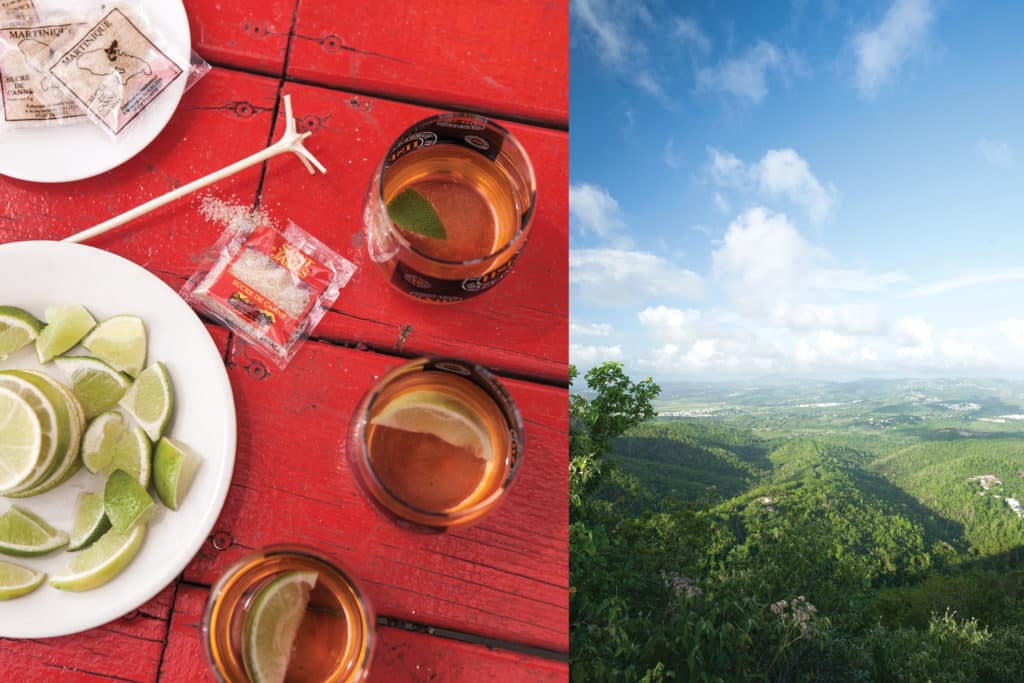
“The rhum is distilled at Le Simon, our parent company,” says Sébastien Dormoy, director of production. “Here we do the finishings — it’s what we’re known for — and propose new experiments.”
Trained as a winemaker in Bordeaux, Dormoy is a bit of a renegade in Martinique’s tradition- bound rhum biz. These “experiments” include aging some of Habitation Saint-Etienne’s rhum in exotic barrels, ones that once held single-malt Scotch, for instance, or sherry, or Sauternes. That happens after the rhum has spent six to nine years in new oak barrels.
“It started because of a chance encounter with a Scottish distiller,” Dormoy says. “We were tasting each other’s spirits, and I decided to try a few drops of one of his peaty whiskys in one of our rhums. Voilà.”
Dormoy urges us to try an extra-vieux that spent a year in a cask used for aging Scottish Island of Islay single-malt Scotch. We get a hit of peat, the richness of fine-aged rum, then a long, smoky finish.
Vive la différence.





